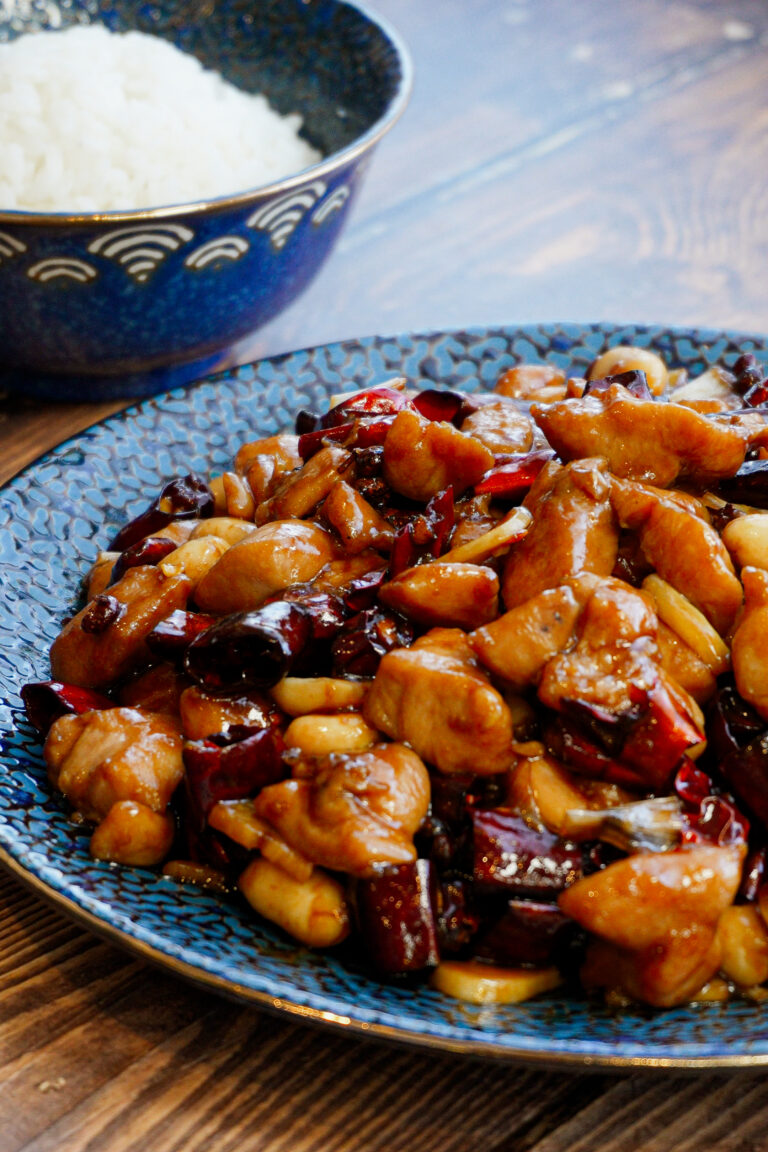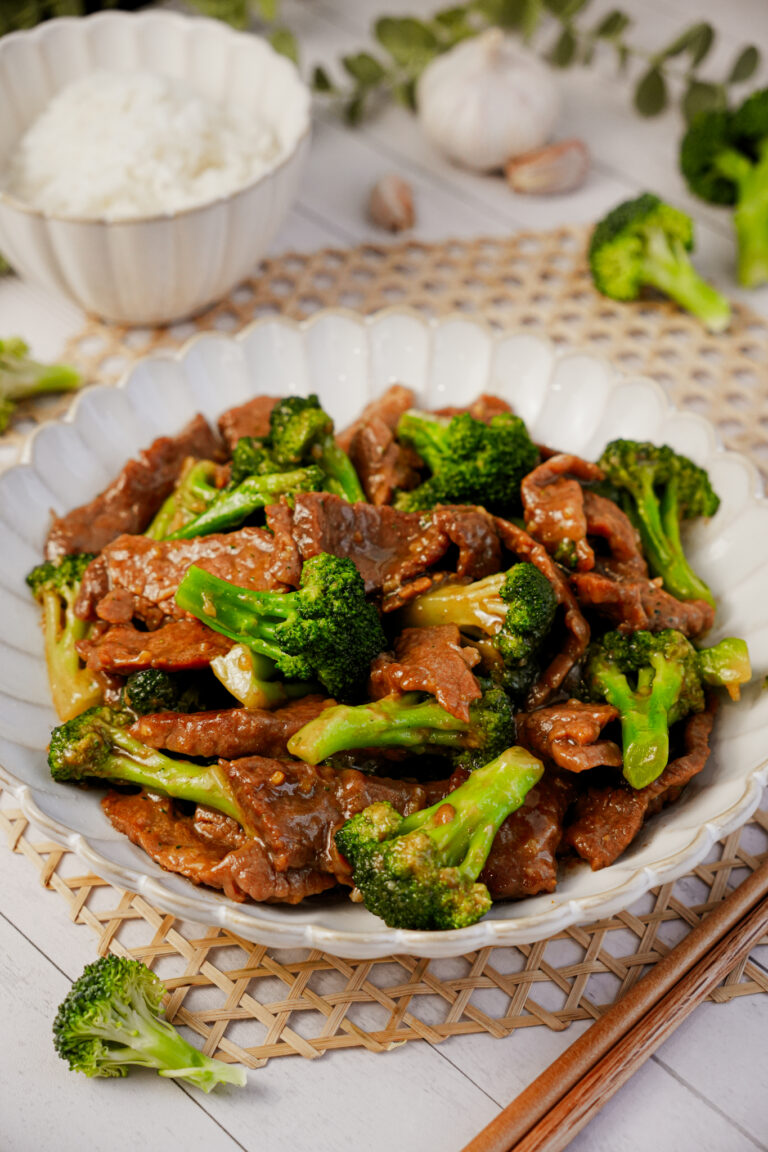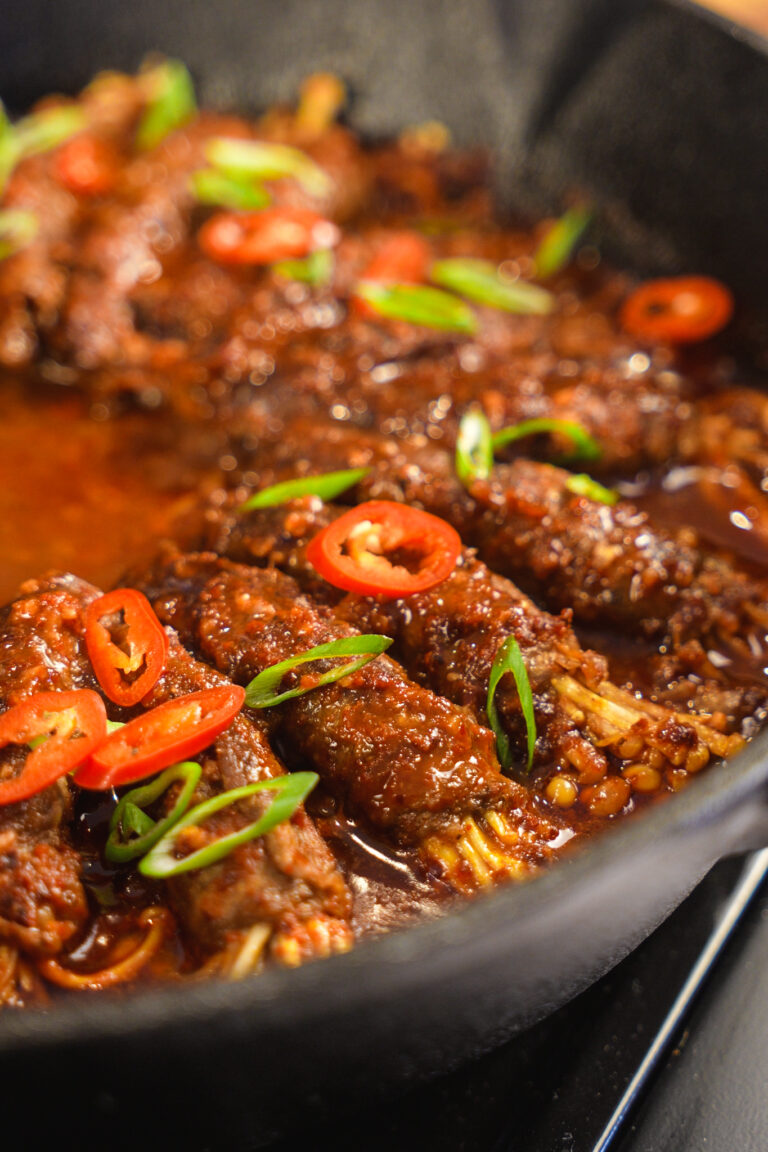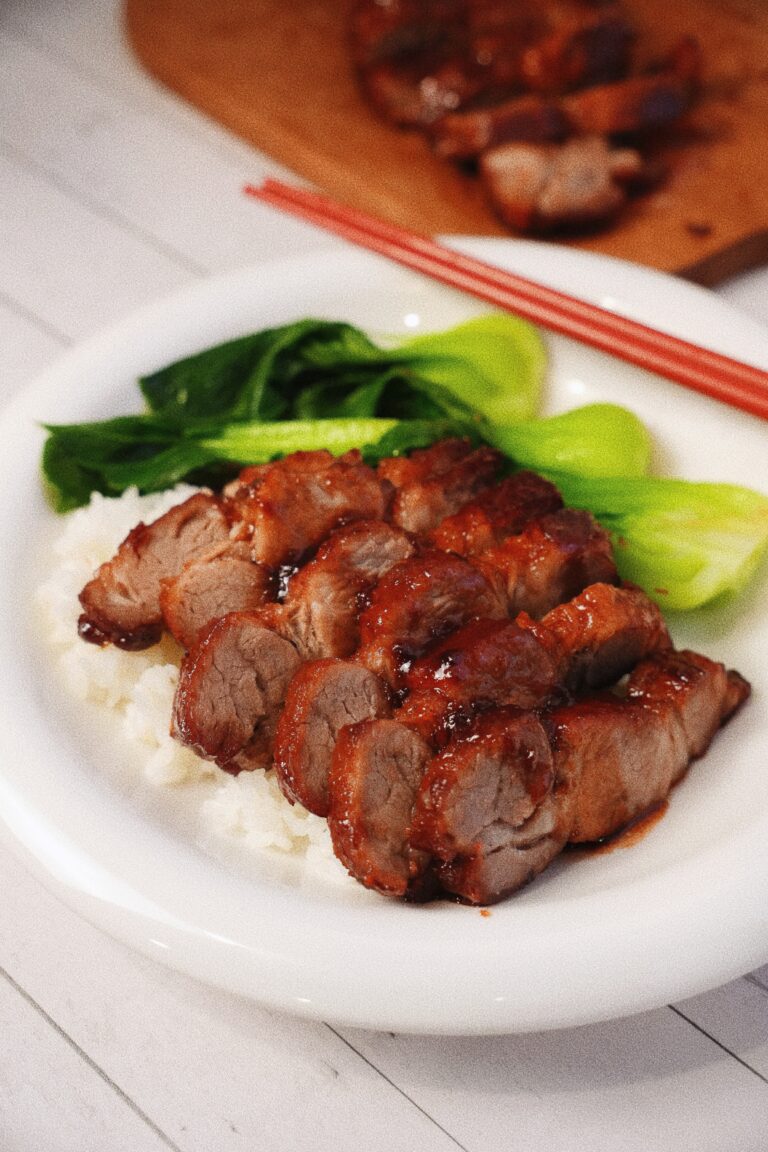Lu Rou Fan (Taiwanese Braised Pork Over Rice)
When we talk about lu rou fan, we’re talking about one of Taiwan’s most iconic comfort foods — right up there with beef noodle soup and crispy popcorn chicken. It’s that nostalgic, heartwarming bowl that so many Taiwanese people grew up eating, and one they can never truly let go of.
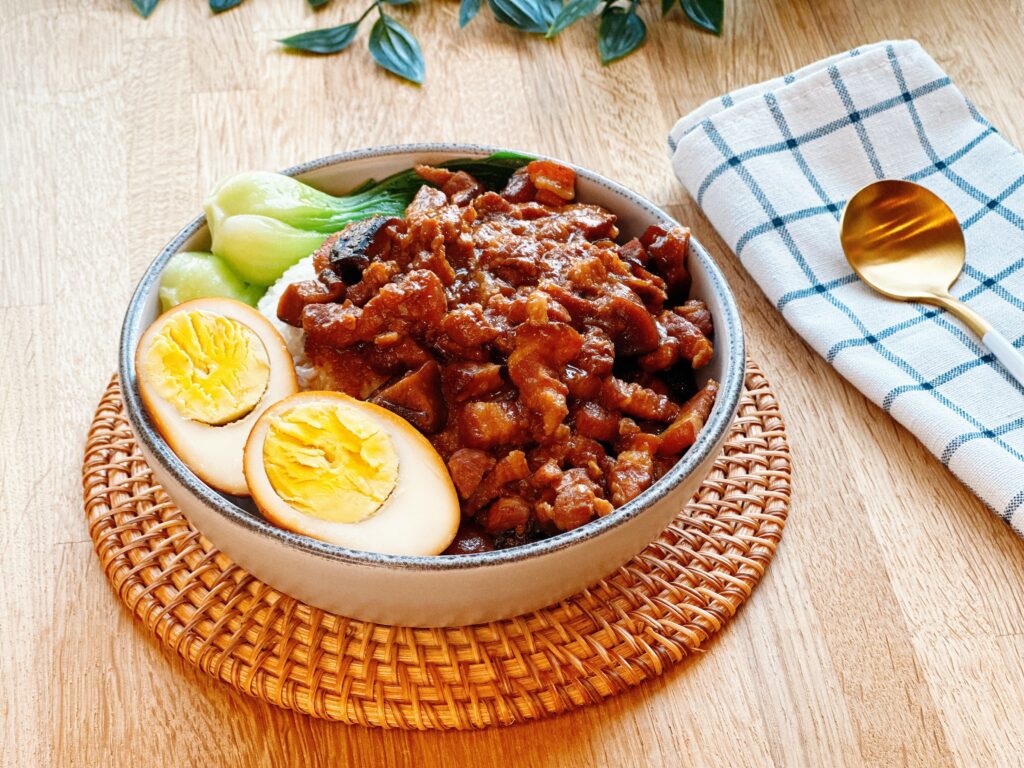
Despite its humble price, lu rou fan delivers a deep sense of satisfaction. Whether you’re grabbing a bowl from a bustling night market stall or ordering it off a fancy restaurant menu, that first bite hits you with all the comforting flavors of home.
Imagine tender, glistening braised pork spooned generously over steaming rice. You give it a good mix, letting every grain soak up the rich, savory sauce. Every bite is just so fulfilling!
Yes! You Can Make It at Home!
The best part? Lu rou fan is totally doable at home. With the right ingredients and a bit of patience, you can easily achieve results that rival your favorite Taiwanese restaurant, or even beat it. Because at home, you get to be generous with the meat and eggs (no stingy toppings here!).
Key Ingredients
Pork Belly
The best cut for lu rou fan is skin-on pork belly. It’s all about that perfect balance: tender lean meat, flavorful fat, and a slightly chewy skin. Aim for a fat-to-lean ratio of about 30% fat to 70% lean, and slice the pork into thin strips where each piece has a bit of everything — fat, lean, and skin. Avoid using all lean meat (it turns dry), and skip the ground pork (while convenient, it lacks the layered texture that makes this dish shine).
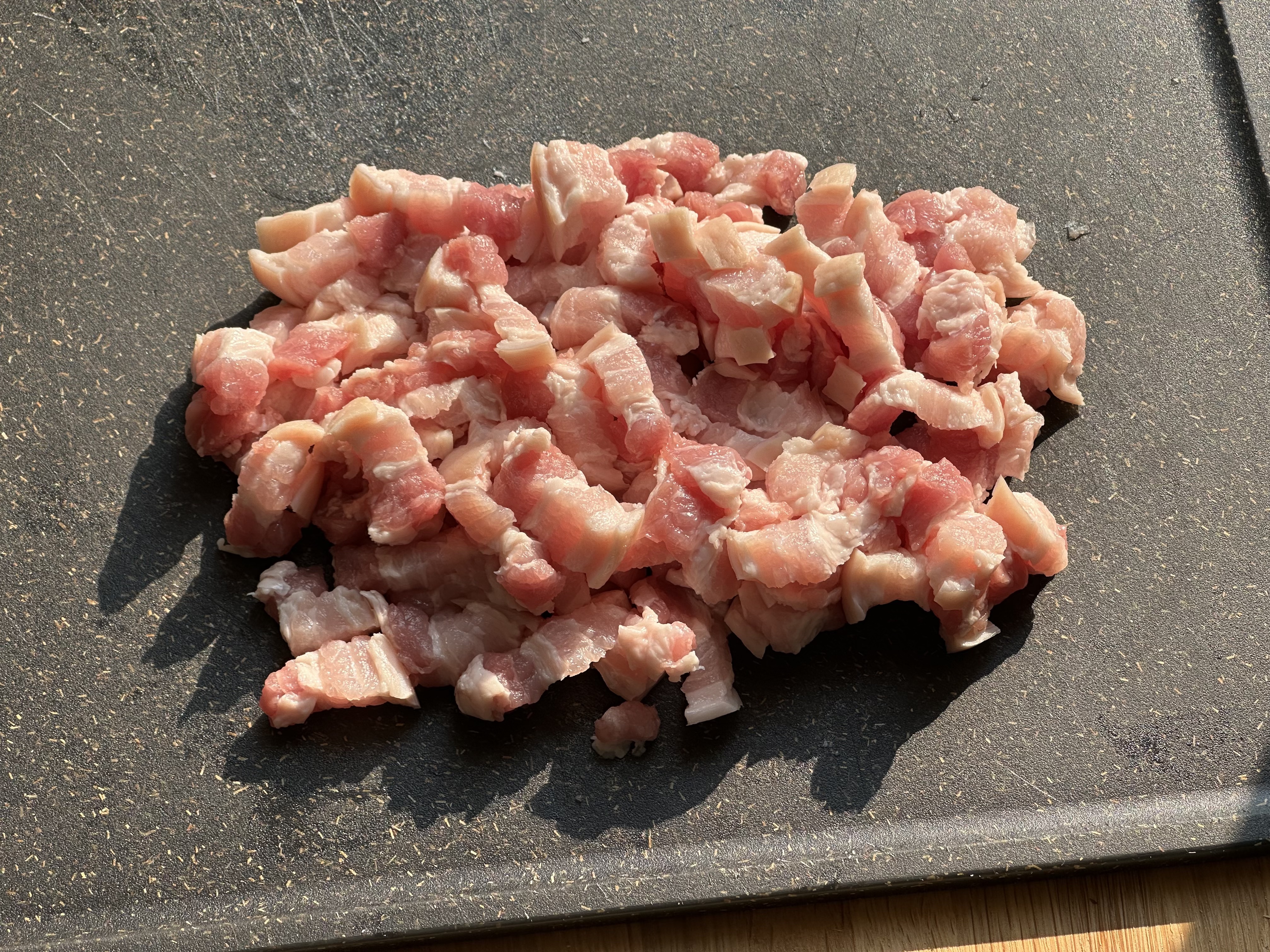
Fried Shallot
Fragrance is the soul of a good lu rou fan, and that signature aroma comes from crispy fried shallots. As the dish simmers, these golden bits release their natural sweetness, infusing the sauce with a rich, savory depth that makes every bite irresistible.
For convenience, I used store-bought fried shallots (油葱酥), which work wonderfully. But if you’d prefer to use fresh shallots, simply finely chop some shallots and stir-fry them in 2–3 tablespoons of oil over low heat until they turn golden and fragrant. Drain and set aside. You can remove some of the oil, then use the same pan to start cooking your pork. The leftover shallot oil adds even more flavor. As always, feel free to adjust the method to suit your own taste!
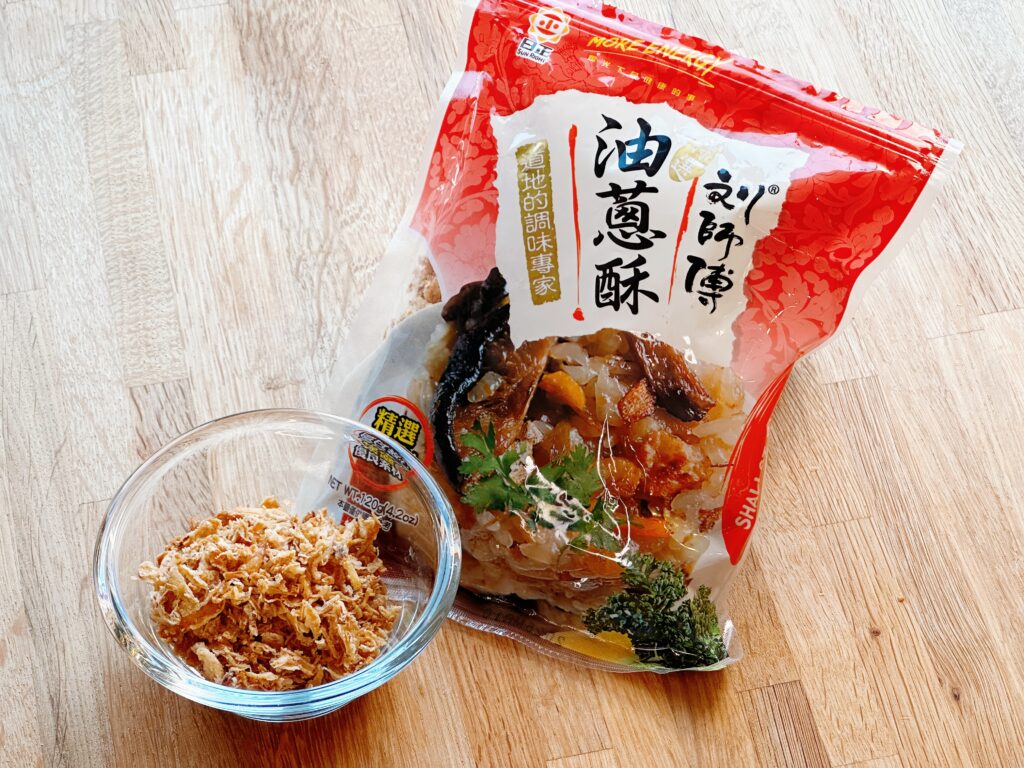
Shiitake Mushrooms
I prefer to use dried shiitake mushrooms for lu rou fan because the drying process really concentrates their umami flavor, making them much more savory than fresh ones. Just soak them in cold water until fully soft, then dice them up. You can also save the soaking water to add extra depth when cooking the pork belly.

Rice
Underrated but essential: the rice matters. The ideal texture should be plump but distinct, slightly sticky without becoming mushy. It’s best to use short-grain rice like Calrose or sushi rice. You want to cook the rice with just enough water. It should be just moist enough to absorb the sauce but still hold its bite.
Some restaurants in southern Taiwan even add a bit of glutinous rice to the mix for extra chew. It’s that subtle chewy texture that makes every bite sing.
Taiwanese Rice Wine
Taiwanese lu rou fan calls for Taiwanese rice wine, not Shaoxing wine. Taiwanese rice wine is brewed purely from rice and has a soft, neutral grain flavor. It doesn’t overpower, and it doesn’t have the added spices or intensity of cooking wine.
In stews, it enhances aroma beautifully, kind of like MSG, but more natural and subtle. It’s a secret weapon that lifts the flavor of the whole dish.
Slow Braising
The final key lies in how you cook it. To get that melt-in-your-mouth pork without drying it out, you’ve got to master the gentle art of slow braising. A low simmer lets the fat gently render, transforming the sauce into something silky and sticky. The result is a glossy gravy that clings to your lips with every bite—rich, savory, and totally irresistible.

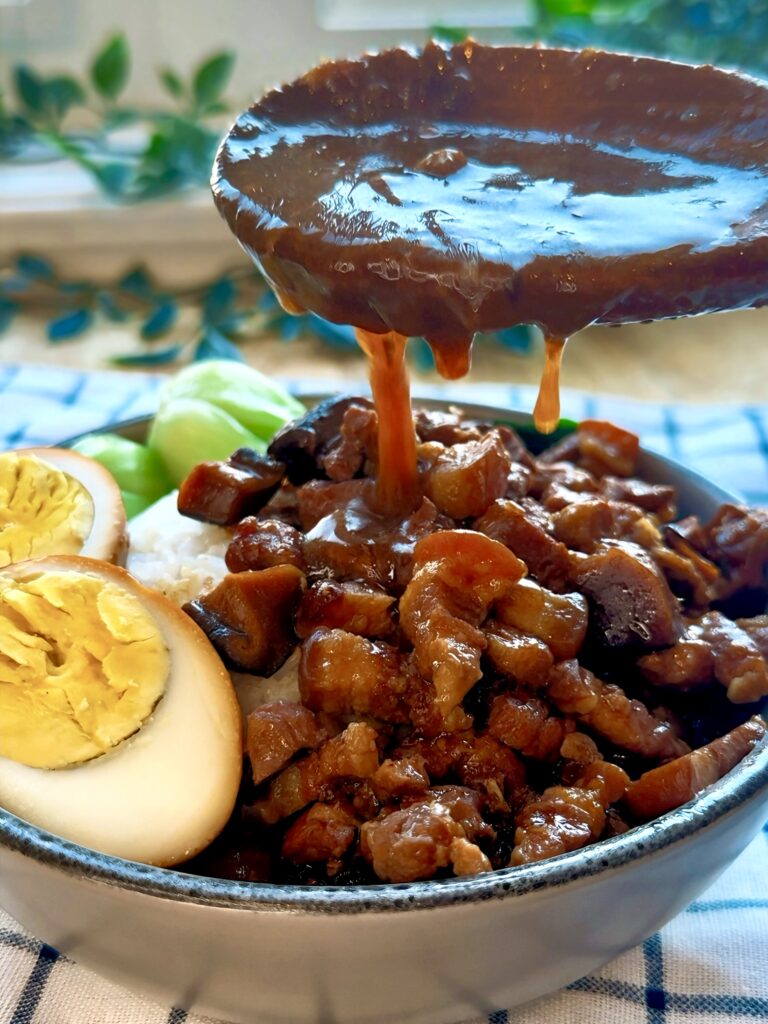
Looking for more authentic recipes? Be sure to follow me on Pinterest, Instagram, Tiktok and Youtube!

Lu Rou Fan – Taiwanese Braised Pork Over Rice
Ingredients
- 2 lb pork belly skin-on, diced
- ½ cup fried shallots (油葱酥) OR use 3 fresh shallots or 1 small purple onion, finely chopped
- 10 shiitake mushroom use preferably dried ones, soak with cold water until fully soft and dice it up. Optional to retain the water for soaking shiitake mushrooms
- 1 tbsp ginger sliced
- 2 cloves garlic minced
- ⅓ cup soy sauce 75-80g
- 2 tbsp dark soy sauce
- 15 g rock sugar
- 2 tbsp rice wine
- 2½ cups water add more hot water during braising as needed
Spice pack: (or use 1/2 tsp five-spice powder)
- 2 star anise
- 3 bay leaves
- 1 small piece of cinnamon stick
- salt to taste, as needed
Instructions
Prepare the Pork:
- Slice and then dice the pork belly into small pieces. Make sure each piece includes a bit of skin, fat, and lean meat.
Optional step: prepare the Shallots (if using fresh):
- Finely chop the shallots or purple onion. Stir-fry in 2–3 tablespoons of oil over low heat until golden and fragrant. Drain and set aside. You can remove some of the oil, then use the same pan for cooking the pork to build extra flavor.
Pan-Fry:
- In a heavy-bottomed pot or deep pan, add the diced pork belly. Pan-fry over medium-low heat until the color changes and some fat starts to render.
- Add ginger and garlic, stir fry for 30 seconds to release the aroma.
- Stir in the shiitake mushrooms, then add soy sauce, dark soy sauce, rice wine, and rock sugar. Toss everything together until evenly coated.
- Add the spice pack (or five-spice powder), star anise, bay leaves, and cinnamon stick.
Simmer
- Pour in the water (or use the liquid for soaking shiitake mushrooms), just enough to cover the pork. Add in fried shallots. Bring to a gentle boil.
- Lower the heat and let it simmer uncovered or partially covered for about 30 minutes. Stir occasionally.
Add Eggs (Optional):
- If using, add the peeled hard-boiled eggs after 30 minutes.
- Continue simmer for another 30 minutes (with or without the eggs), or until the pork is tender and the sauce has thickened.
Serve:
- Spoon the braised pork and eggs over a bowl of hot steamed rice. Enjoy!


